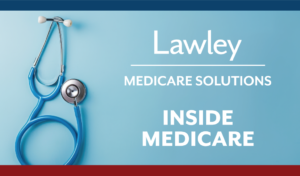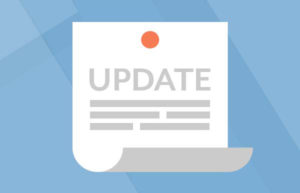New York Paid Family Leave Law


To download this entire document as a PDF, click here: New York Paid Family Leave Law
OVERVIEW
New York’s paid family leave law requires private sector employers to provide paid family leave benefits to eligible employees starting Jan. 1, 2018. Final regulations implementing the law were issued on July 19, 2017.
Under the law, paid family leave benefits will be phased in over a four-year period. When the law is fully implemented in 2021, employees may be eligible for up to 12 weeks of paid family leave. The paid family leave benefits will be funded through employee paycheck deductions. Employers are not responsible for contributing to or funding paid family leave benefits, but may choose to do so.
ACTION STEPS
New York employers should review their existing leave, attendance and paid time off policies and revise them as necessary to comply with the new paid family leave program. Employers will also need to contact their disability benefits carrier to add paid family leave benefits, and determine when to start payroll deductions. In addition, employers should communicate the new paid leave program to employees and update employee handbooks or other leave program descriptions to describe the program.
Eligibility
An employee who works 20 hours or more per week is eligible for paid family leave benefits if the employee works for a covered employer for 26 or more consecutive weeks. The final regulations confirm that a part-time employee (an employee who works fewer than 20 hours per week) is eligible for paid family leave after he or she has worked for a covered employer for 175 days.
Private sector employers are covered by New York’s paid family leave law if they have one or more employees employed in New York on each of at least 30 days in any calendar year.
Paid Family Leave Benefits
When fully implemented in 2021, eligible employees may receive up to 12 weeks of paid family leave at 67 percent of their average weekly wages. The amount of paid family leave benefits will be phased in as follows:
| Date | Maximum Benefit within 52-week Period | Paid Family Leave Benefit |
| Jan. 1, 2018 | 8 weeks | 50 percent of the employee’s average weekly wage |
| Jan. 1, 2019 | 10 weeks | 55 percent of the employee’s average weekly wage |
| Jan. 1, 2020 | 10 weeks | 60 percent of the employee’s average weekly wage |
| Jan. 1, 2021 | 12 weeks | 67 percent of the employee’s average weekly wage |
An employee’s paid family leave benefits are also capped at the state average weekly wage. For example, effective Jan. 1, 2018, eligible employees may receive up to 50 percent of their average weekly wage during family leave, not to exceed 50 percent of the state average weekly wage. When an employee is eligible for paid family leave, there is no waiting period before he or she is eligible to receive paid family leave benefits.
In addition, the New York Department of Financial Services (NYDFS) has discretion in delaying the increases to family leave benefits if there are concerns about the stability of the program or potential negative effects on the economy.
According to a notice issued by the New York Department of Taxation and Finance (DOTF), paid family leave benefits are taxable non-wage income that employees must include in their gross income. Taxes will not automatically be withheld from paid family leave benefits, although employees can request voluntary tax withholding.
Funding for Paid Family Leave
The paid family leave benefit will be funded entirely through employee payroll deductions. No employer is required to contribute to or fund the paid family leave benefit.
The NYDFS has set the 2018 employee contribution rate for paid family leave benefits. The employee contribution rate for coverage beginning Jan. 1, 2018, is 0.126 percent of an employee’s weekly wage, not to exceed the statewide average weekly wage (currently, $1,305.92). This percentage will be updated by the NYDFS annually, on Sept. 1 of each year.
The final regulations confirm that, although not required to do so, employers were able to begin collecting employee contributions on July 1, 2017 (for the 2018 benefit year). According to the DOTF, contributions should be deducted from employees’ wages on an after-tax basis. Employers should report employee contributions on IRS Form W-2, using Box 14.
Employers have the option of self-insuring paid family leave, but only if the employer currently self-insures short-term disability benefits. Eligible employers that want to self-insure paid family leave must elect to do so by Sept. 30, 2017.
Waiver of Paid Family Leave
If an employee will not be eligible for paid family leave because he or she will not work 26 consecutive weeks (for employees who work 20 or more hours per week) or 175 days in a 52-week period (for employees who work fewer than 20 hours per week), the final regulations require the employer to inform the employee of his or her ability to file a waiver of family leave benefits.
If an employee chooses to file a waiver, the employee is exempt from making paid family leave contributions during his or her employment. If employment circumstances change so that the employee would be eligible for paid family leave, the waiver will be automatically revoked. If an employee chooses not to file a waiver, he or she will be obligated to make paid family leave contributions during employment.
Family Leave Use
An employee may receive paid family leave benefits for any period of “family leave,” defined as:
- Leave to participate in providing care, including physical or psychological care, to a family member with a serious health condition;
- Leave to bond with the employee’s child during the first 12 months after the child’s birth, or after the placement of the child for adoption or foster care with the employee; or
- Leave taken because of any qualifying exigency as interpreted under the federal Family and Medical Leave Act (FMLA) arising out of the fact that the spouse, domestic partner, child or parent of the employee is on active duty (or has been notified of an impending call or order to active duty) in the U.S. Armed Forces.
For purposes of family leave, “family member” is defined as a child, parent, grandparent, grandchild, spouse or domestic partner. The definition of a “serious health condition” is similar to the definition under the FMLA.
If there are two employees of the same employer that are eligible for leave for the same family member, an employer may implement rules to limit employees from receiving paid family leave benefits at the same time. For example, an employer may restrict spouses (who both work for the employer) from taking family leave at the same time to care for their child.
Intermittent Leave
Paid family leave benefits may be received on an intermittent basis (less than a full workweek), in increments of one full day (that is, one-fifth of the weekly benefit). The final regulations implement specific employee notice requirements for use of intermittent leave, as described below.
Employee Notice and Certification
When the need for family leave is foreseeable (for example, for the birth or placement of a child or for planned medical treatment), an employee may be required to provide his or her employer with 30 days’ advance notice of the intention to take family leave. If the need for leave is not foreseeable, the employee must provide notice as soon as practicable.
An employee who uses paid family leave on an intermittent basis is required to provide the employer with notice as soon as practicable before each day of intermittent leave.
In addition, an employee must notify the employer of the specific qualifying event (type of family leave use) and the anticipated timing and duration of the leave. An employee may be required to provide medical certification completed by a health care provider to support the need for family leave. In all instances where certification is required, it is the employee’s responsibility to provide a complete and sufficient certification. A failure to do so may result in the denial of family leave.
Interaction with Other Laws and Benefits
An employee is not able to receive both full disability benefits and paid family leave benefits at the same time. However, an employee may be able to supplement partial disability benefits with paid family leave benefits, up to the family leave benefit maximum, when combined with the partial disability benefit. No employee is entitled to more than 26 weeks of combined disability and family leave benefits during a 52-consecutive calendar week period.
In addition, any paid family leave benefit must run concurrently with an employee’s available entitlement under the federal FMLA, unless an employer chooses to permit otherwise. Employer policies should outline how paid family leave interacts with the FMLA, and employers must provide employees with proper notification when an employee’s paid family leave is designated as FMLA leave.
An employee may choose to use accrued and available vacation, or other paid time off, to receive a full salary while on family leave (in lieu of the paid family leave benefit). If an employee chooses to use available paid leave, employers may seek a reimbursement from the carrier.
When paid family leave runs concurrently with an employee’s FMLA leave entitlement, the final regulations provide that an employer may charge an employee’s accrued paid leave in accordance with the provisions of the FMLA.
Employee Protections
An employee who takes time off for a permitted paid family leave reason must be reinstated to his or her original position upon return to work, or reinstated to a comparable position with equal pay, benefits and other terms and conditions of employment.
An employer must maintain an employee’s group health plan benefits for the duration of paid family leave as if the employee had continued to work. This includes the employee continuing to make his or her share of the premium contribution. Additionally, an employee may not lose any benefits accrued during employment prior to taking family leave. An employer may not retaliate against an employee who takes paid family leave.
Employer Notice Requirements and Possible Penalties
Employers will be required to conspicuously post a notice in the workplace to indicate their compliance with the paid family leave requirements. In addition, employers must provide employees who take eight or more consecutive days of family leave with a written notice of their rights under the paid family leave law.
Employers that maintain an employee handbook must include a paid family leave policy that outlines employees’ rights and obligations, including how to file a claim for paid family leave. An employer that does not maintain a handbook must provide each employee a written notice regarding all of the employee’s rights and obligations under the paid family leave law, including information on how to file a claim for paid family leave.
An employer that fails to comply with the requirements of the paid family leave law is guilty of a misdemeanor and may face penalties, including fines and imprisonment.
Additional Information
New York established a website—Paid Family Leave: How it Works—that provides additional information, including answers to frequently asked questions (FAQs), on the paid family leave law. There is also a website dedicated for employers – New York State Paid Family Leave: Employers.





